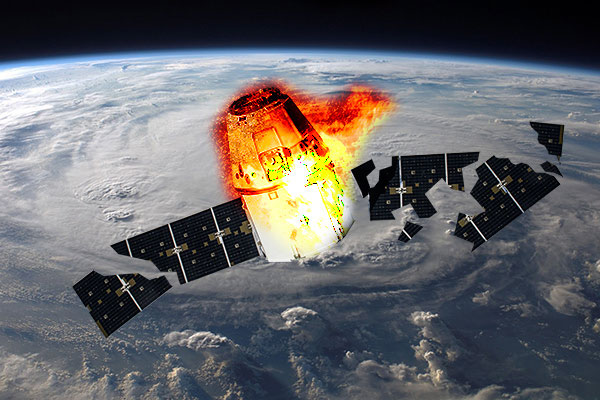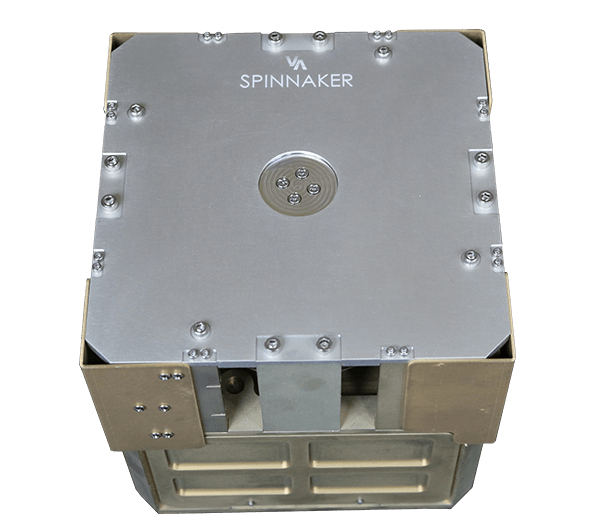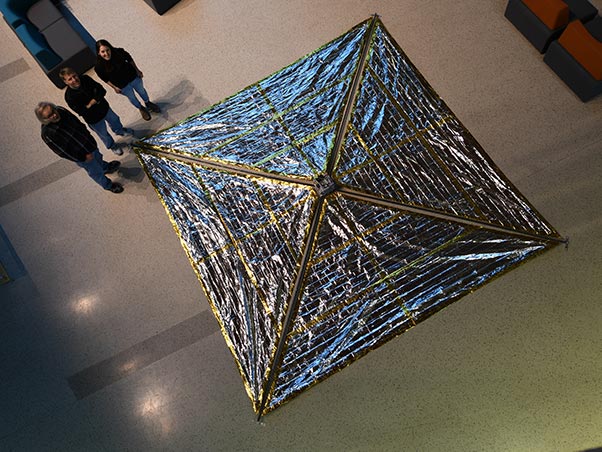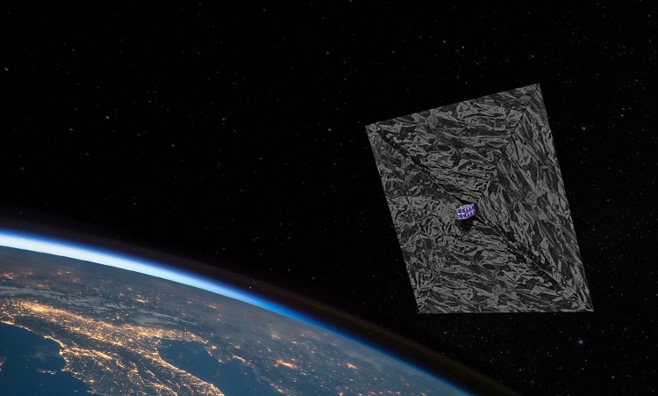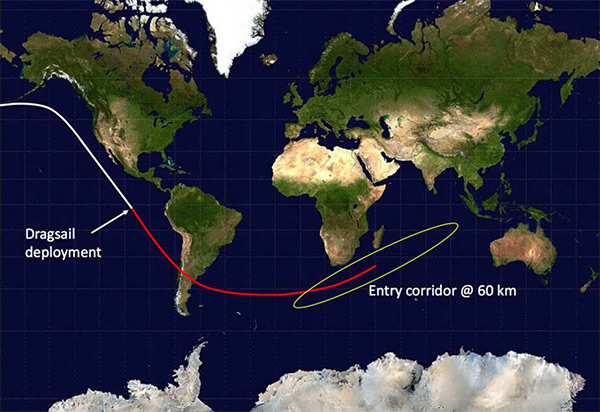Targeted Re-Entry
Uncertainty on the time of reentry often spans multiple orbits, which results in satellite burnup not being constrained to a specific geographic region. For satellites in the deorbit phase and approaching reentry, dragsail deployment can be used to initiate atmospheric entry and constrain the entry corridor. By deploying the dragsail at low orbital altitudes, the step increase in surface area provides a drag force that can induce reentry within a fraction of an orbit period.

